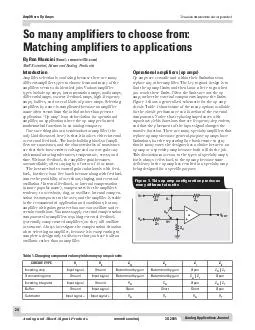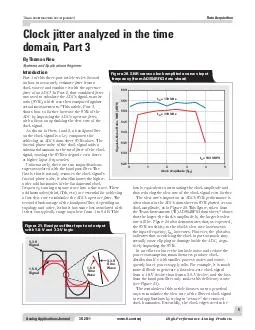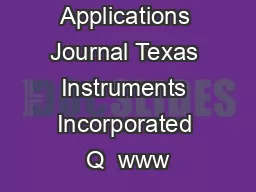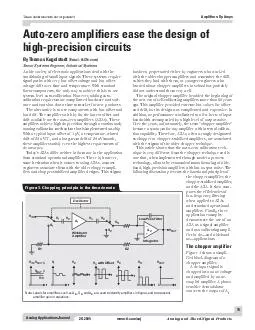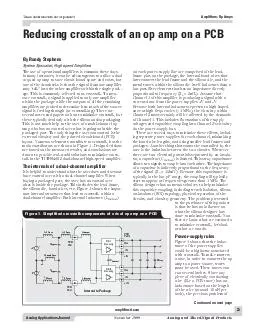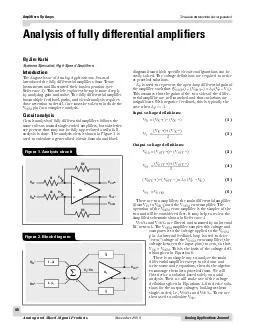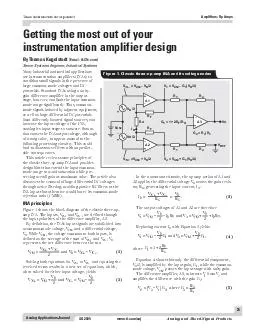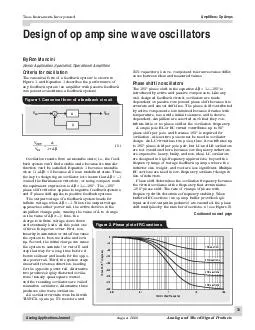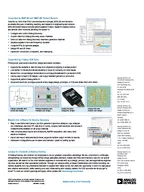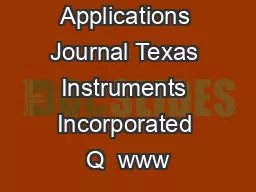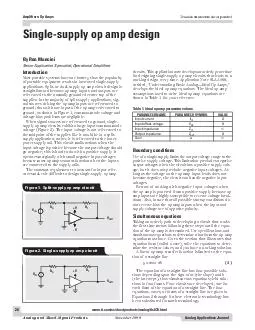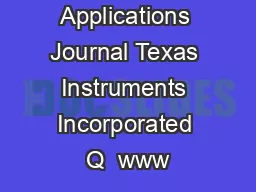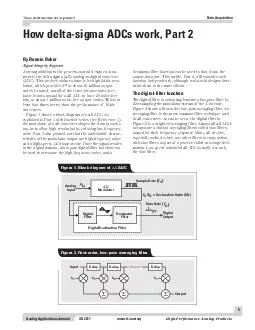PDF-Analog Applications Journal Analog and MixedSignal Products www
Author : min-jolicoeur | Published Date : 2014-12-13
ticomaaj 3Q 2005 So many amplifiers to choose from Matching amplifiers to applications Introduction Amplifier selection is confusing because there are many different
Presentation Embed Code
Download Presentation
Download Presentation The PPT/PDF document "Analog Applications Journal Analog and M..." is the property of its rightful owner. Permission is granted to download and print the materials on this website for personal, non-commercial use only, and to display it on your personal computer provided you do not modify the materials and that you retain all copyright notices contained in the materials. By downloading content from our website, you accept the terms of this agreement.
Analog Applications Journal Analog and MixedSignal Products www: Transcript
Download Rules Of Document
"Analog Applications Journal Analog and MixedSignal Products www"The content belongs to its owner. You may download and print it for personal use, without modification, and keep all copyright notices. By downloading, you agree to these terms.
Related Documents

